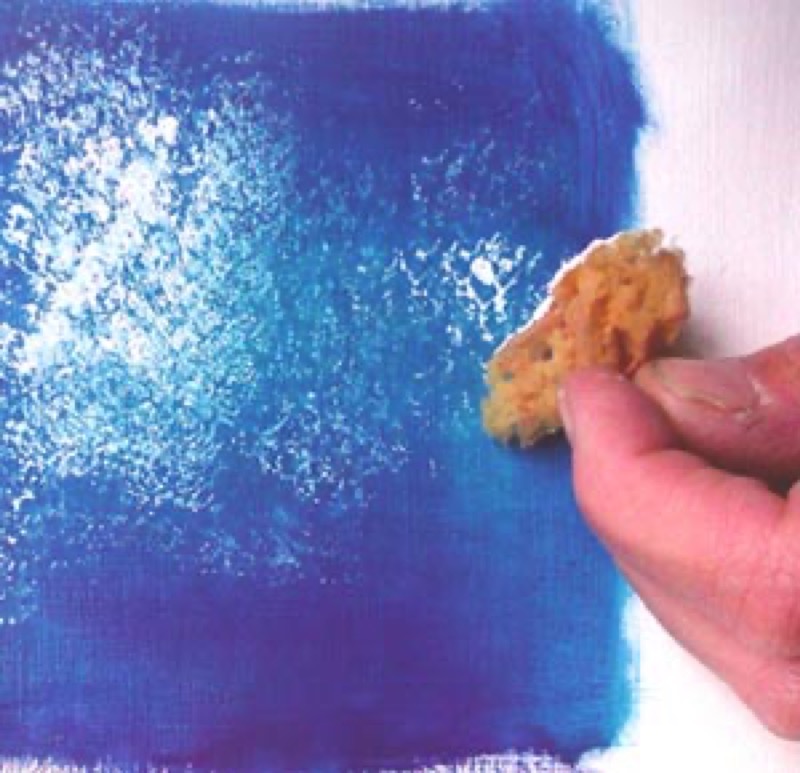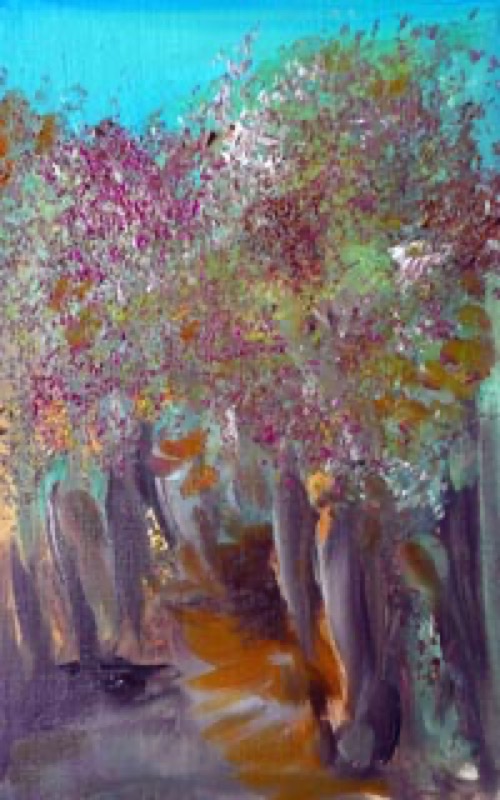Dense foliage, misty clouds, light foam… for an ultra realistic rendering, put away your brushes and paint with a pad!
What you need to know
This is one of the easiest techniques to acquire in oil painting. All you need to do is apply paint with a sponge, a rag or even a crumpled piece of paper. You can achieve somewhat raised effects, depending on the type of pad you choose

Choosing the right sponge
Natural sponge: its irregular, honeycombed, porous surface creates loose patterns with lively reliefs.
- Add paint to the sponge, then dab it on the surface being worked.
- The problem: reliefs tend to collapse. To keep that from happening, use modeling paste to give the paint more consistency.
Synthetic sponge: because it is sturdier and stiffer, it produces fine, dense textures, perfect for creating foliage or hazy landscapes.
- Use just like a natural sponge.
Remember
Either kind of sponge will allow you to quickly cover wide areas of paint. If you are a bit lazy, keep it in mind for painting your backgrounds…

Varying effects
Fusion effect: put a little paint on a piece of cloth and use it to apply several misty layers in various colors. The shades will blend together to create new shades. This is an easy technique for creating the colorful fall foliage in a forest.
Fragmentation effect: apply paint by dabbing with a honeycombed pad (sponge, crumpled paper). In this case, the colors cover small areas, touching without mixing. Do you want to paint a wheat field? The fragmentation effect allows you to add some cornflowers.
Recommended product:
Graduate Oil and Acrylic
